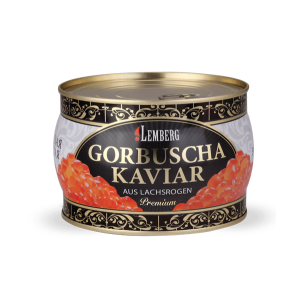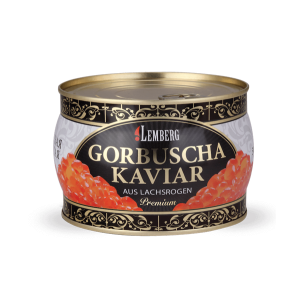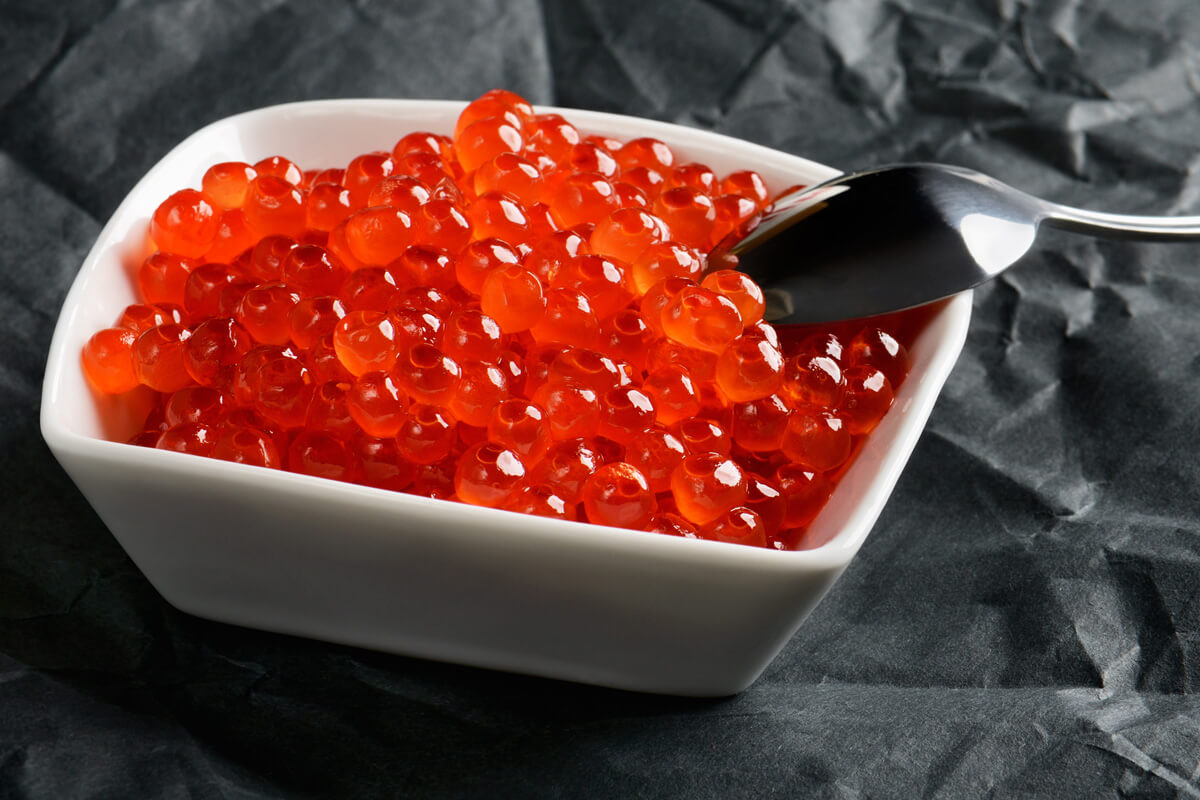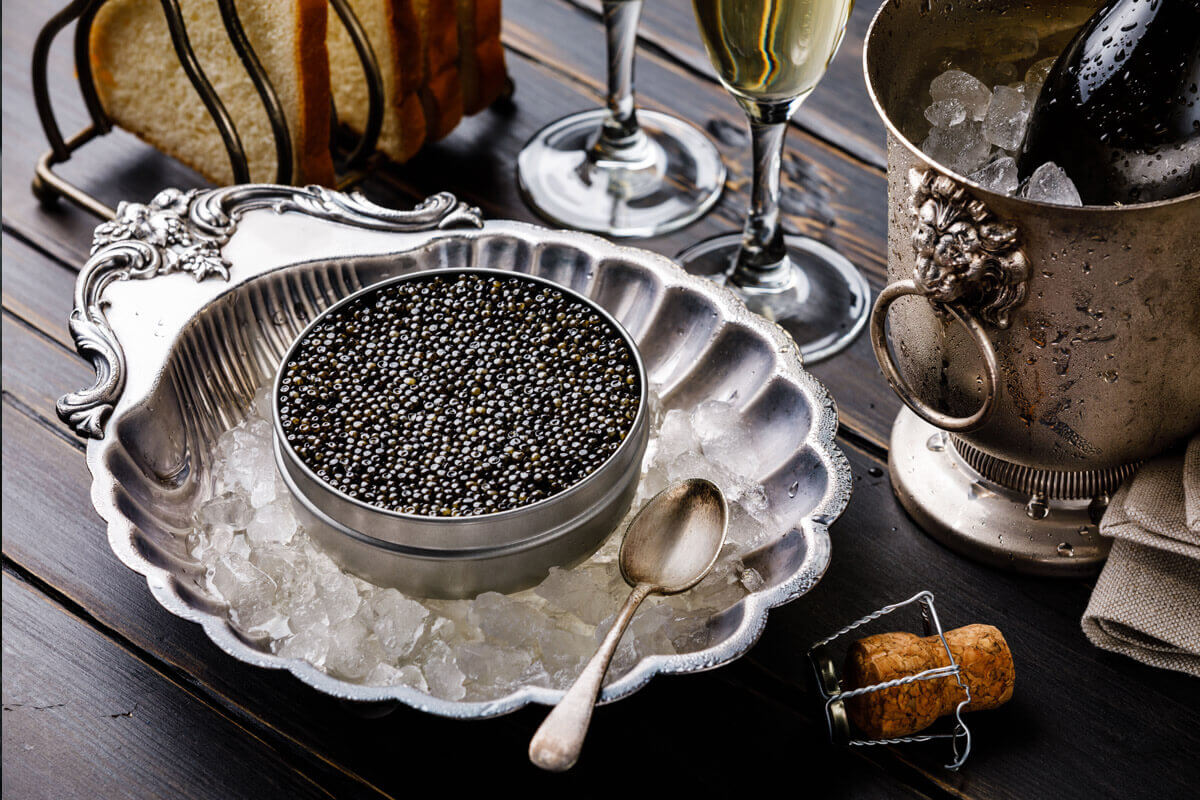What is caviar made of?
Being one of the truly most exclusive hors d'oeuvres worldwide, caviar is extremely difficult to harvest and process, which partly explains its very high retail price. In this short article, we will explain what caviar is made of and describe the production process from A to Z. We will also mention different kinds of caviar and highlight its benefits for our health.
What is Caviar?
Strictly speaking, the term refers to the fertilized eggs of a female sturgeon (the so-called black caviar), both sea and freshwater, although it is usually applied to the roe of other species of unscaled fish too (the so-called red caviar). The table below shows the most common species used for the purpose worldwide:
Black Caviar | Red Caviar |
Carp | |
Lumpfish | |
Ossetra (Russian and American) | Salmon |
Sevruga | Steelhead |
Sterlet | Trout |
Whitefish |
Historically, caviar specifically referred to the roe of wild sturgeons from the Caspian and Black Seas, including the famed Beluga, Osetra, and Sevruga. In modern terminology, however, the term has broadened to include roe from a variety of sturgeon and other fish species like salmon, trout, and carp. The United States Food and Drug Administration (FDA) defines true caviar as sturgeon-origin only, underlining the distinction between traditional and contemporary interpretations.
Caviar's roots trace back to the Byzantine Greeks, who savored this delicacy as early as the tenth century. Its trade with Russia marked the beginning of a longstanding cultural and economic relationship centered around this exquisite food. The most expensive, Beluga caviar from the Caspian Sea, gained immense popularity, leading to concerns about overfishing and the depletion of wild stocks. This prompted regulatory actions such as the 2005 U.S. ban on the import of Caspian and Black Sea Beluga caviar and Russia's subsequent suspensions of wild caviar production in 2008 and 2011.
Partly as a result of the high cost of production and out of concern for the fish population, genuine caviar is not that easy to find, and the vast majority of the relevant products on the global market are, in fact, imitation caviar made of some kind of white fish. In addition, there are plenty of substitutes produced specifically for:
- Vegetarians, who can enjoy imitation caviar made from seaweed
- Jewish people, to adapt this hors d'oeuvre to the Kosher restrictions by extracting caviar from various species of scaled fish
Nevertheless, none of the above-mentioned alternatives can ever compare in taste to the genuine product, and they are all significantly inferior to real caviar in terms of the organic components they contain. Besides being a delicious snack, fish eggs are also very good for our health, especially for our skin, as they contain numerous invaluable vitamins and other organic compounds, such as:
Amino acids | Calcium | Carbohydrates | Lipid acids | Phosphorus |
Potassium | Proteins | Sodium | Vitamins D, B6 and B12 | Zinc |
How Caviar Is Harvested
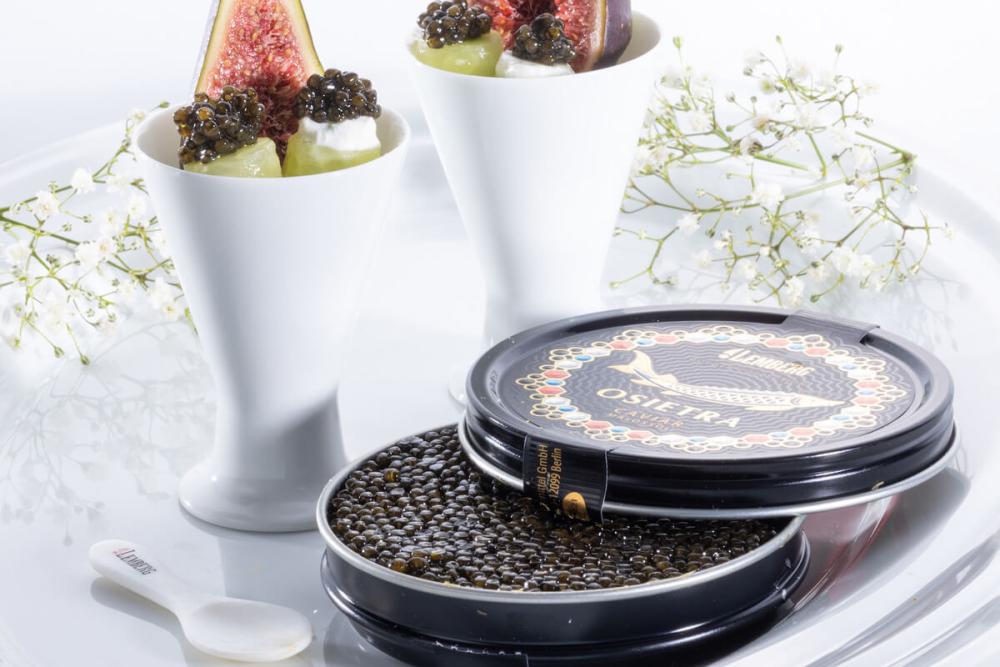 Basically, there are two ways to harvest the roe, namely catching the fish when its eggs are ripe or breeding it in artificial ponds. Of course, the second method is more practical and economical, and most producers these days have started collecting caviar in their fish farms. However, the environmental conditions must be as close to the natural habitat of the species as possible.
Basically, there are two ways to harvest the roe, namely catching the fish when its eggs are ripe or breeding it in artificial ponds. Of course, the second method is more practical and economical, and most producers these days have started collecting caviar in their fish farms. However, the environmental conditions must be as close to the natural habitat of the species as possible.
Apart from that, it is extremely important that the fish experience very little or no stress all the way from breeding to the actual extraction of the roe, as the stress hormone has an adverse effect on the texture and taste of the final product. Which is why professionals even recommend sedating the fish before killing it or performing a surgical operation.
In most cases, fish farmers use either ultrasound of high frequency or biopsy technologies to assess the quality and readiness of the roe. The size of the grains, for example, is a decisive factor that will affect the market value of the caviar. The most expensive eggs are at least 3mm in diameter.
However, it is the timing of harvesting that is of the most crucial significance for the quality and value of the extracted eggs. For best effect, the extraction must be performed precisely three days before the fish is ready to spawn. Before that, the eggs will be fat and sticky; past this deadline, caviar will be a mush.
To Kill or Not to Kill
Due to the latest technological advances, it is possible nowadays to extract the roe without killing the fish, although most farmers stick to the traditional method nonetheless. This is a major concern for consumers who want to taste fish products yet object to cruel treatment of animals in general. At present, the extraction of sturgeons is tightly regulated by CITES. This fish is recognized as being endangered.
The two most widespread of the so-called humane harvesting techniques are the cesarean section and vivace extraction. Humane though these methods may be, they are rarely practiced for the following reasons:
- These extraction techniques are considerably more expensive and difficult to apply.
- They affect the ultimate flavor and texture of the roe, often making it too chewy and bitter.
- The caviar thus harvested tends to lose most of its nutritional value.
How Caviar Is Made
There are many different technologies for extracting caviar, depending on a variety of factors. And since a thorough discussion of this topic falls outside the scope of our article, we will only describe the most common method currently practiced.
- Once the roe has been taken out of the fish, the sac is rubbed against a special grid to separate the eggs and then rinsed with cool water to remove all impurities.
- Next, they use tweezers to remove the grains of inferior colour and quality.
- The mesh is then salted, which is one of the most intricate steps in the production process, and the one that requires a considerable amount of professional knowledge and experience, as it affects the flavour and texture of the final product. Ideally, the saline content of caviar should not exceed 3%.
- Finally, the eggs are left to age for three months at the temperature of 3 °C.
FAQ:
What are the different types of caviar?
The most renowned types are Beluga, Osetra, and Sevruga caviar. Each type comes from a different species of sturgeon and varies in size, color, texture, and flavor.
Can vegetarians eat caviar?
Traditional caviar comes from fish, so it's not vegetarian. However, there are vegetarian alternatives made from seaweed and other plant-based ingredients that mimic the texture and flavor of caviar.
What is the difference between black and red caviar?
Black caviar traditionally comes from sturgeon, while red caviar is typically sourced from salmon or other species of fish. They differ in taste, texture, and price.
Are there sustainable options for caviar?
Yes, sustainable caviar typically comes from aquaculture farms where sturgeons are bred and harvested in an environmentally responsible manner. This approach helps preserve wild sturgeon populations.
How do caviar's flavor and texture vary?
The flavor and texture of caviar can vary based on the type of fish, the waters they inhabit, and the processing methods. Flavors range from buttery and nutty to briny and fishy, while textures can vary from creamy to firm and popping.
Final Word
Most seafood lovers agree that caviar should be stored in the fridge and that black caviar, in particular, tastes better when it is slightly chilled. And you should keep in mind that its shelf life outside the refrigerator is about ten days.
Moreover, to preserve its taste and nutritional value, never freeze caviar, and avoid contact with metals too. Instead, scoop it up with a spoon made of mother-of-pearl, and if you would like to eat it chilled, serve it on a bed of ice.
Last update: 08.12.2023
Our bestsellers
Read also
Beluga caviar, derived from the beluga sturgeon, is a luxurious and highly sought-after delicacy. This caviar, a prized delicacy, is known for its large, creamy eggs and exquisite flavor.
Caviar, a delicate and perishable delicacy, requires proper storage to maintain its freshness. Proper storage conditions and regular freshness checks are essential for enjoying caviar at its best.
Whether you want to enjoy the luxurious black caviar or prefer to opt for a less costly red variety, it is important to know how to serve caviar. Read on to learn what garnishes and drinks to offer...
Enjoy caviar in various ways, such as topping pancakes or crackers with cream cheese and caviar, pairing it with vodka for a traditional experience, or using it to enhance dishes like oysters...
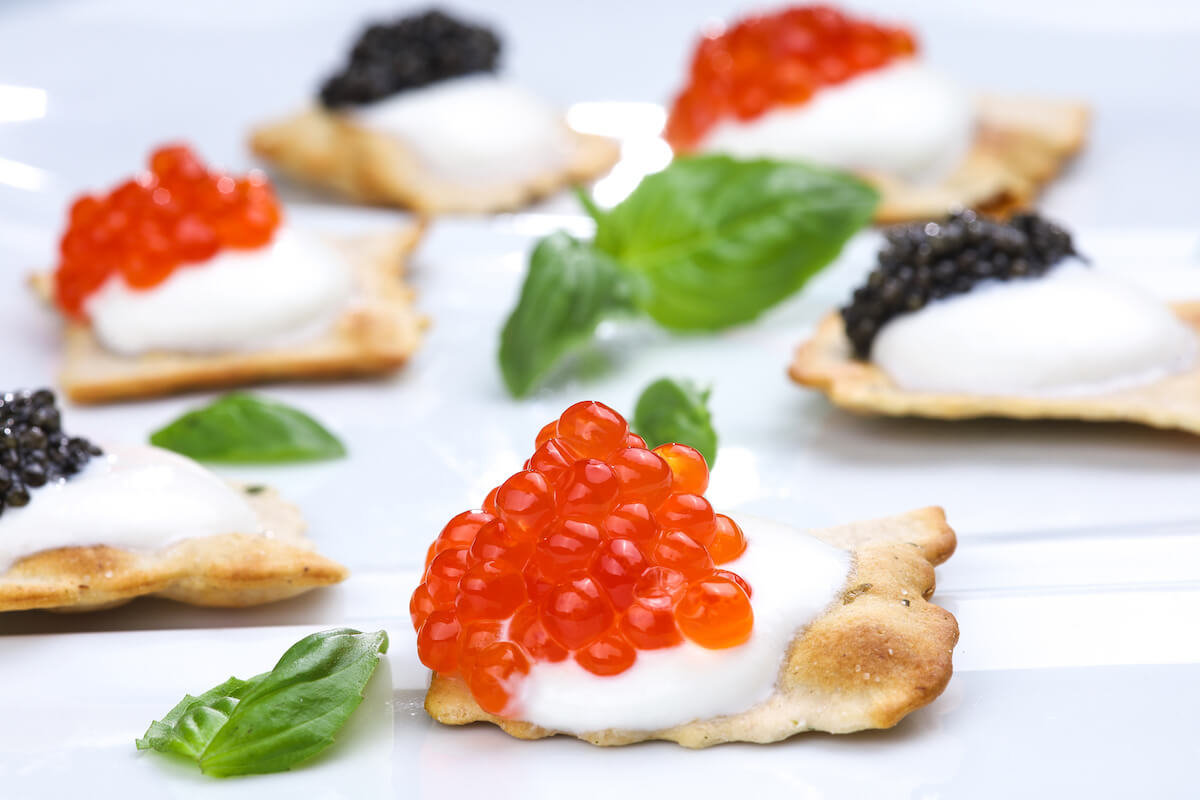
Indulge in the exquisite flavors of Ossetra caviar. With its medium-sized eggs, this delicacy offers a buttery taste and a subtle hint of nuttiness. Elevate your dining experience with this luxurious treat, perfect for special occasions.
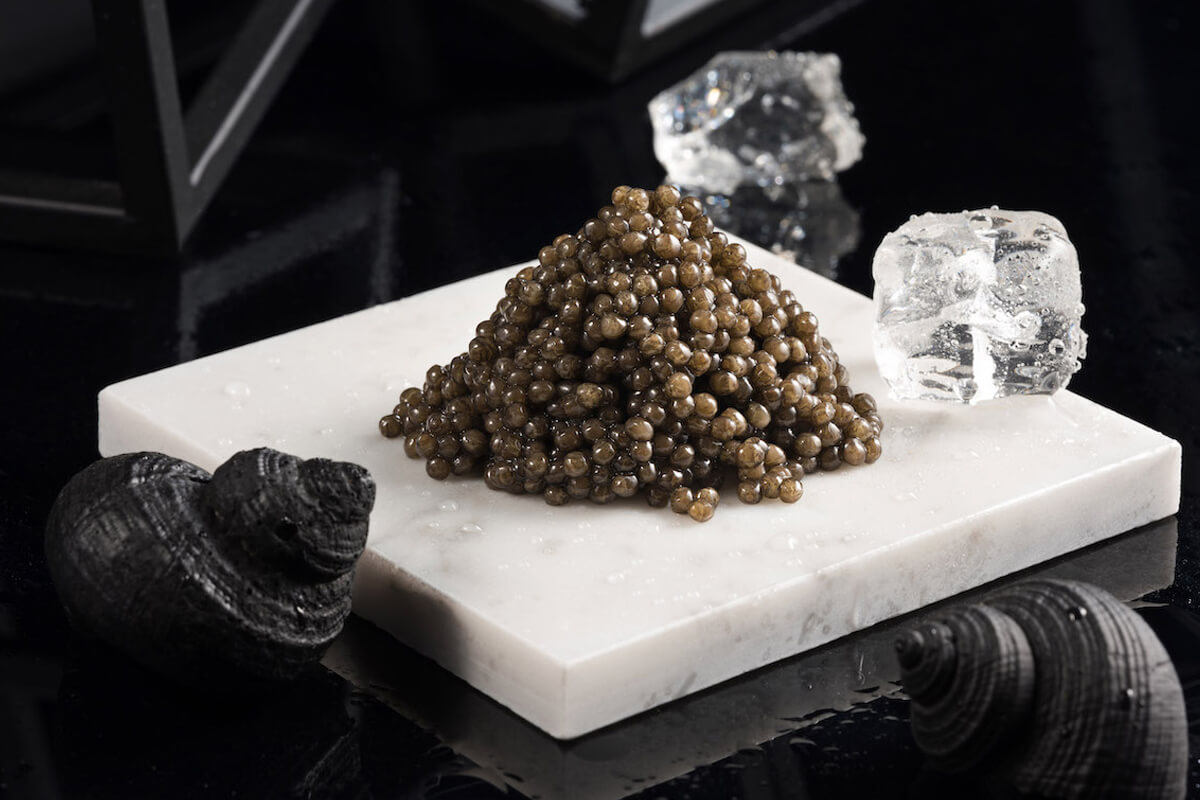
Caviar is one of the most delicious and healthy foods rich in protein and iodine. The high cost is due to the complexity of the production technology and the exquisite taste of the finished product.
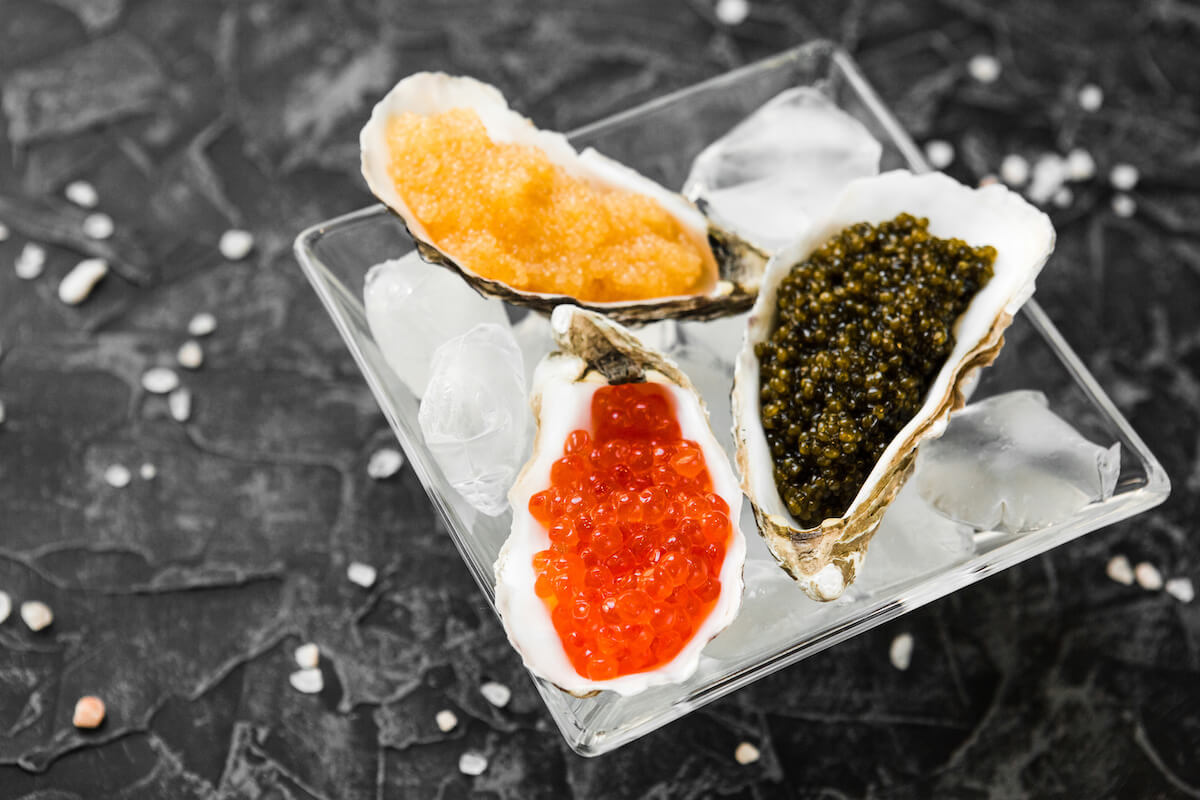
Whether you want to enjoy the luxurious black caviar or prefer to opt for a less costly red variety, it is important to know how to serve caviar. Read on to learn what garnishes and drinks to offer to your party.

There are many different technologies for extracting caviar, depending on a variety of factors. And since a thorough discussion of this topic falls outside the scope of our article, we will only describe the most common method...

 Русский
Русский

